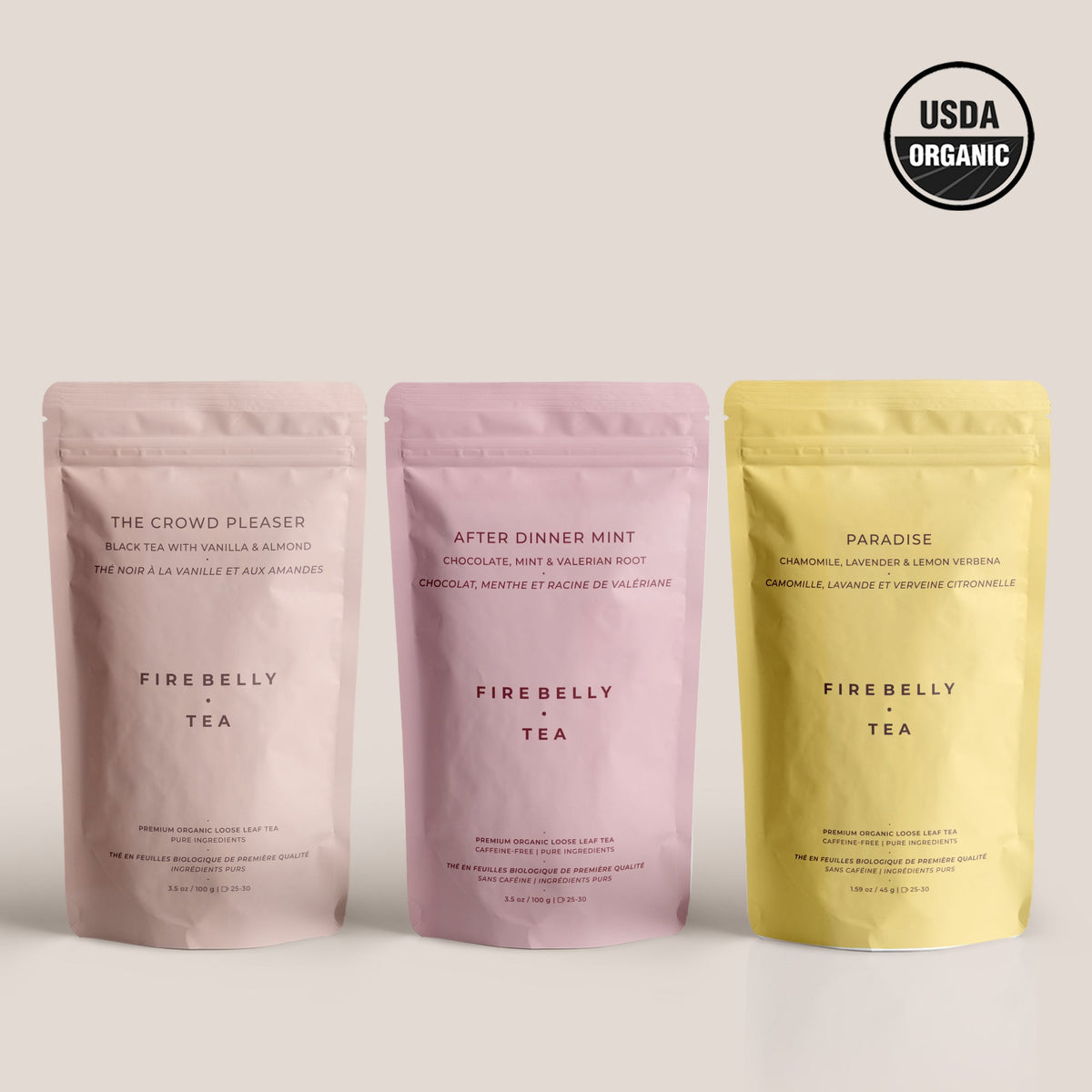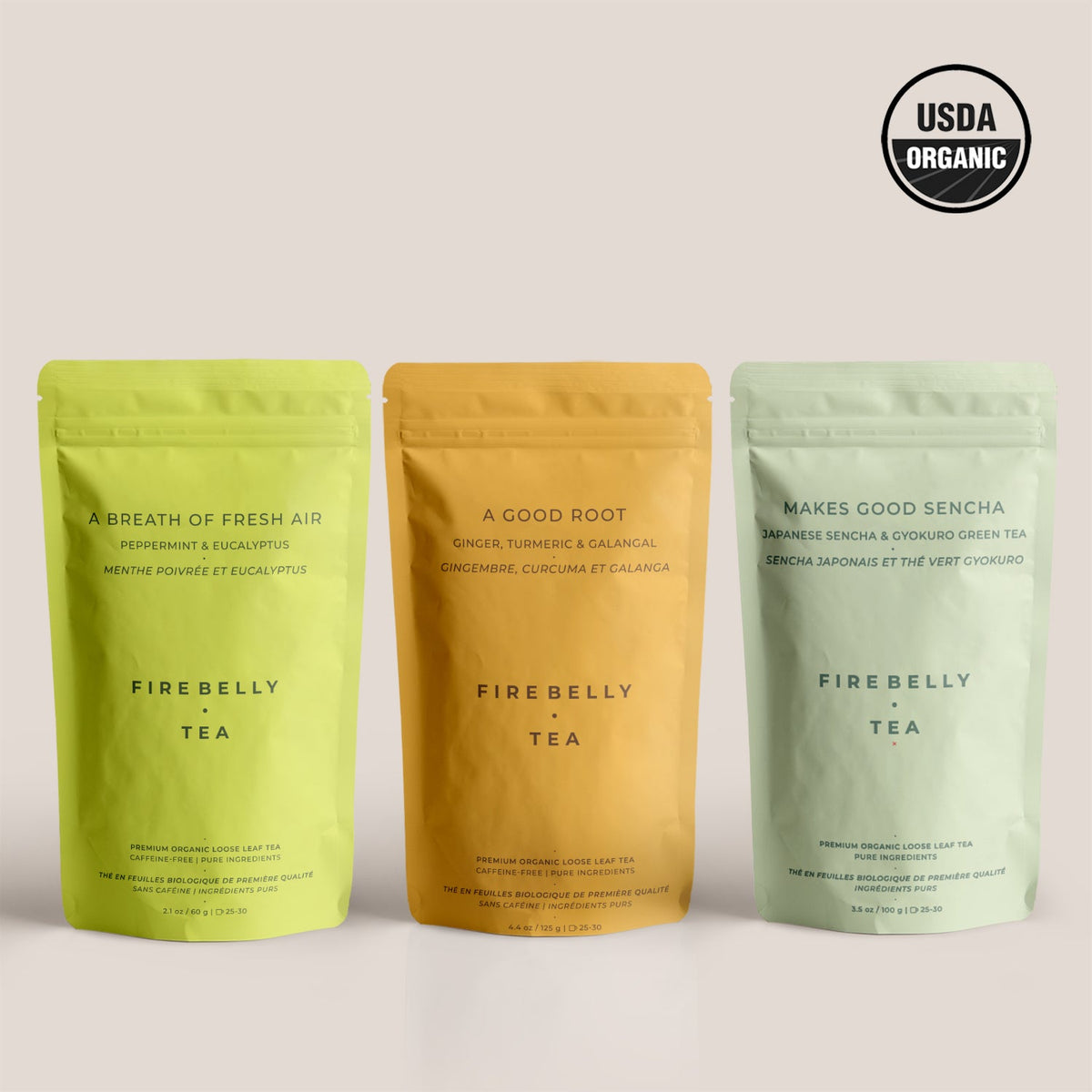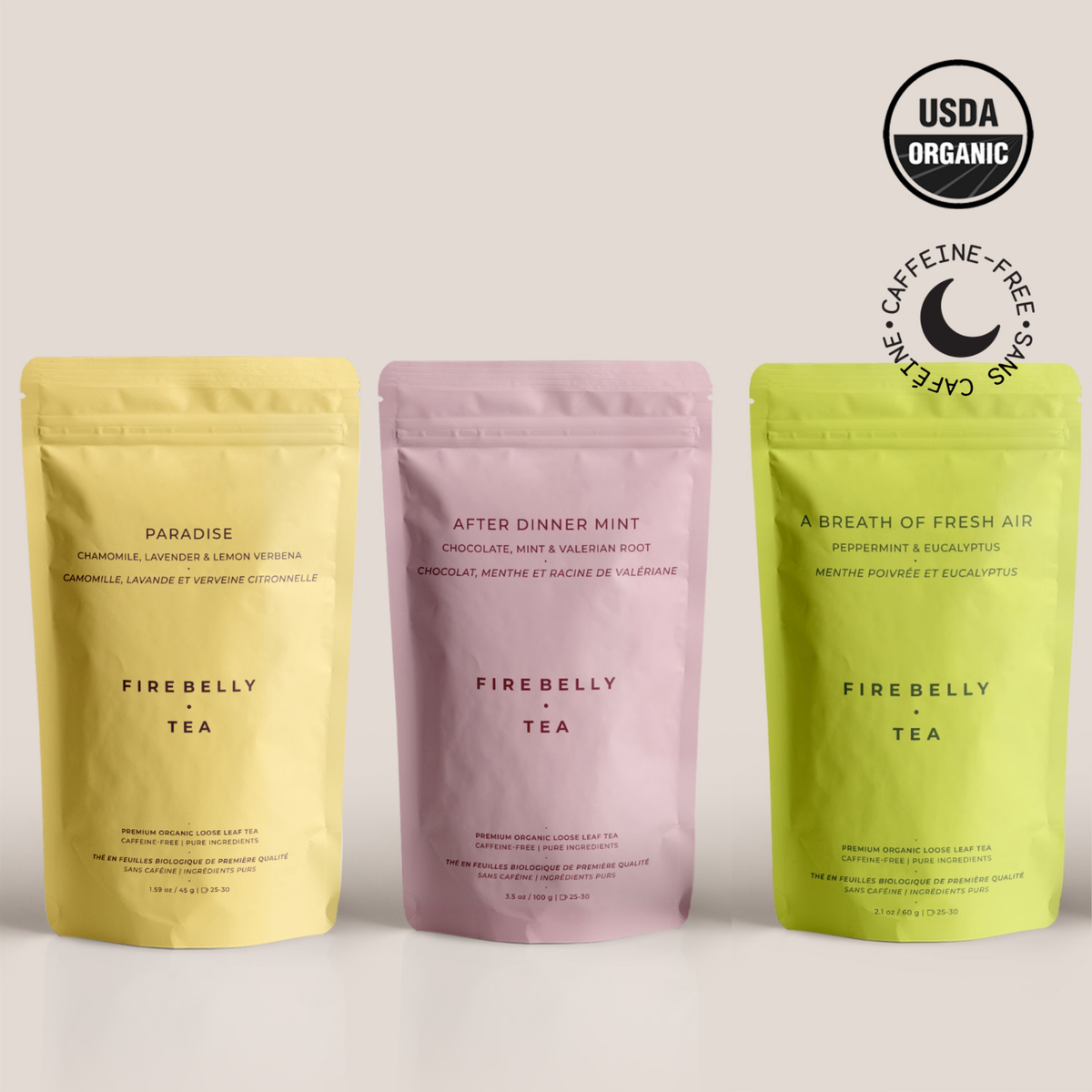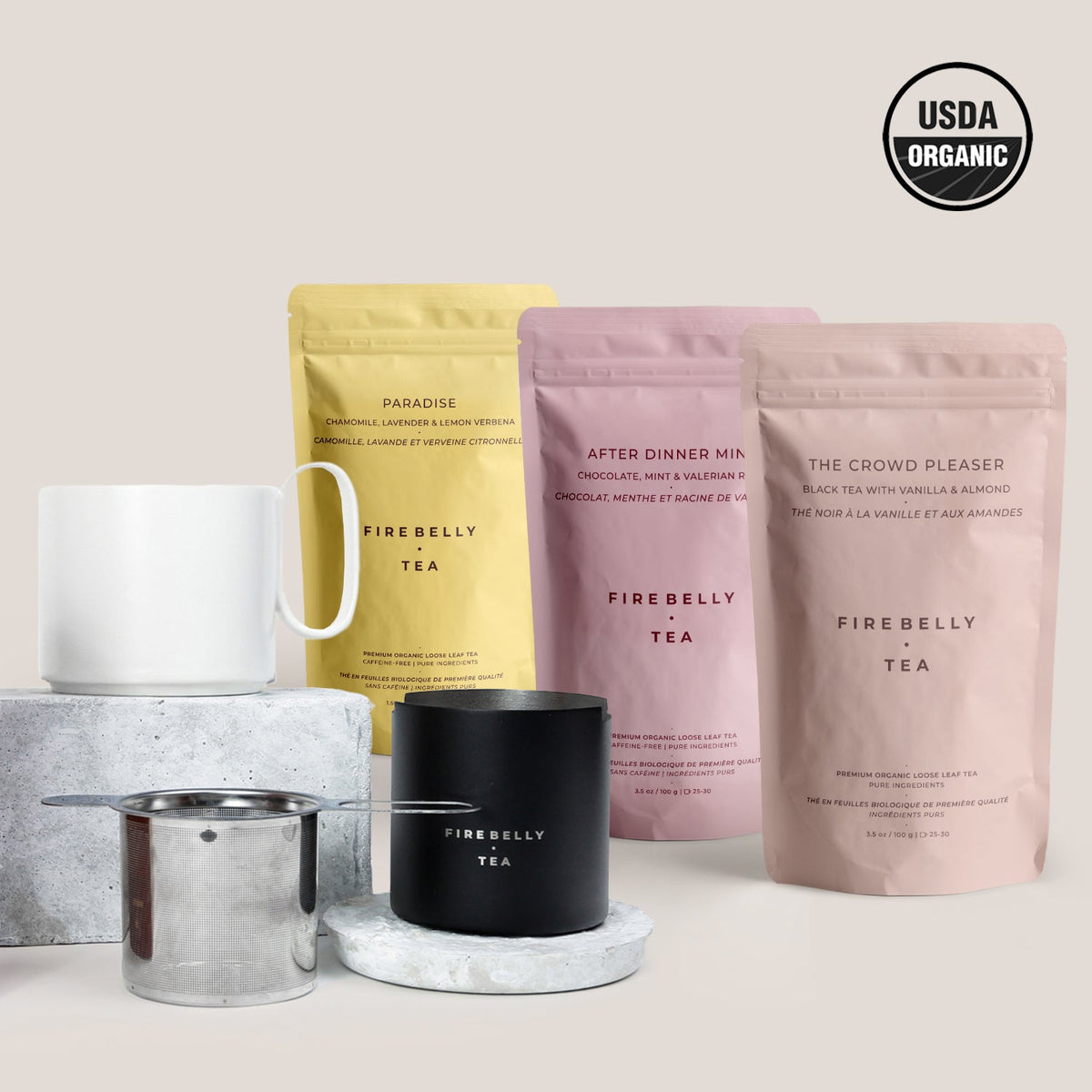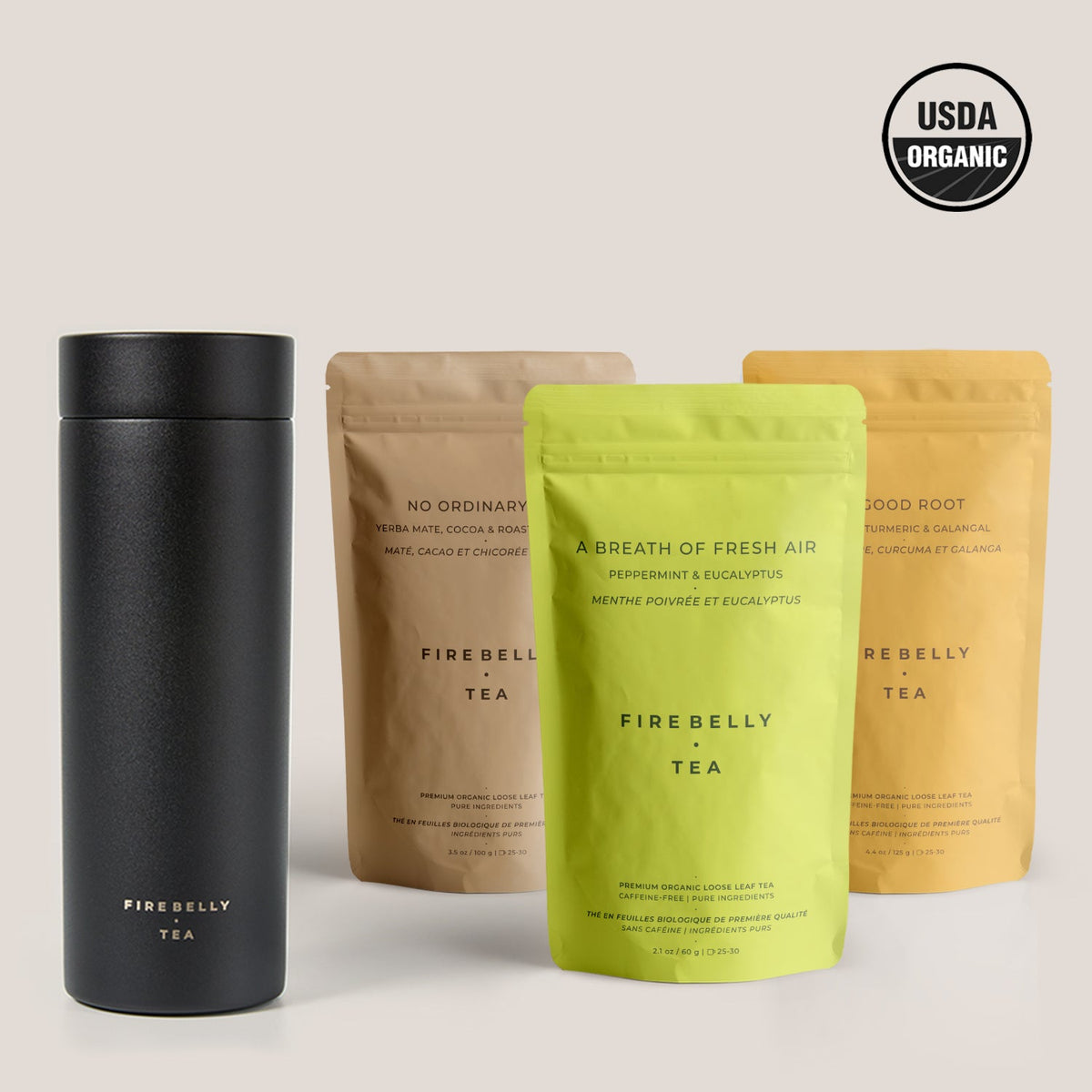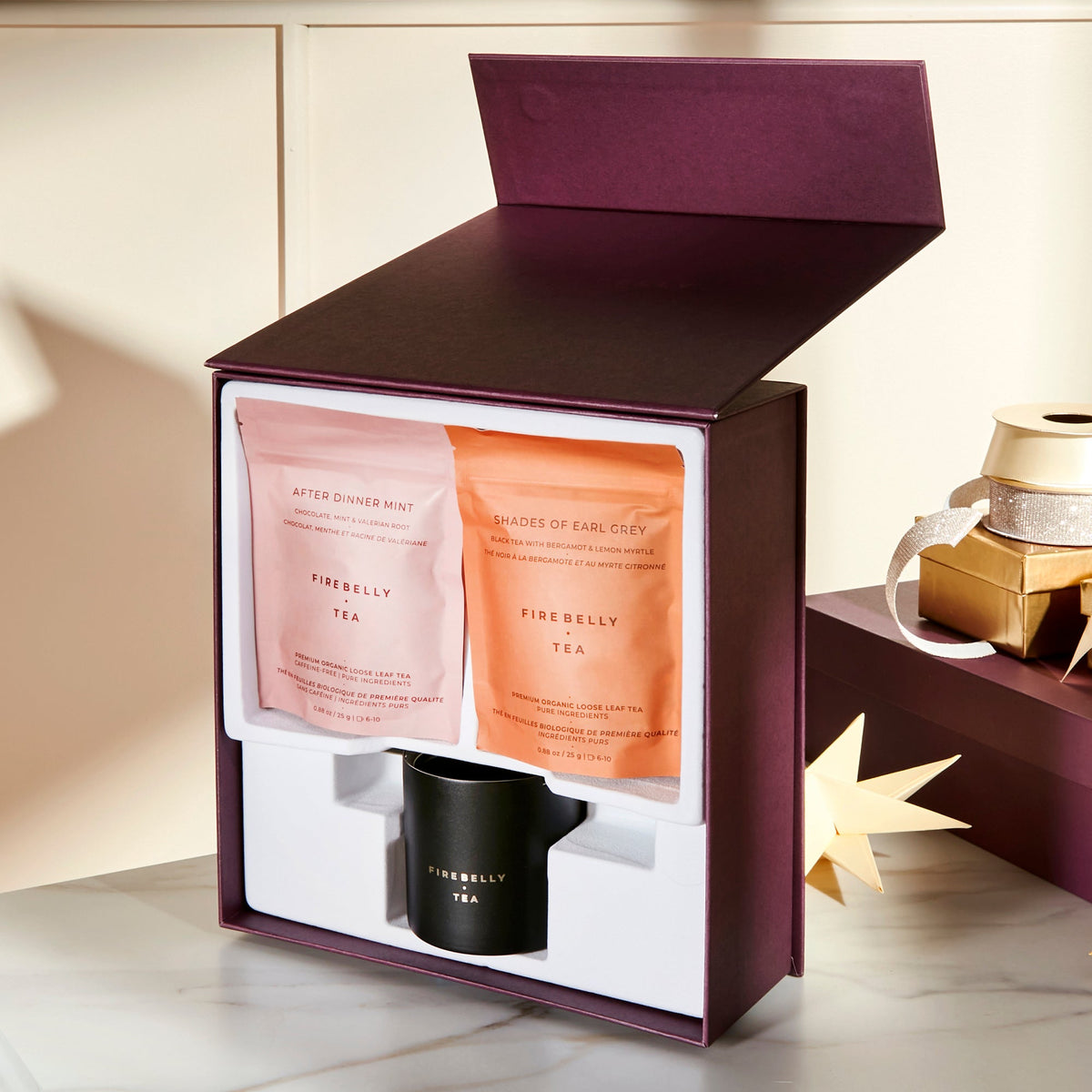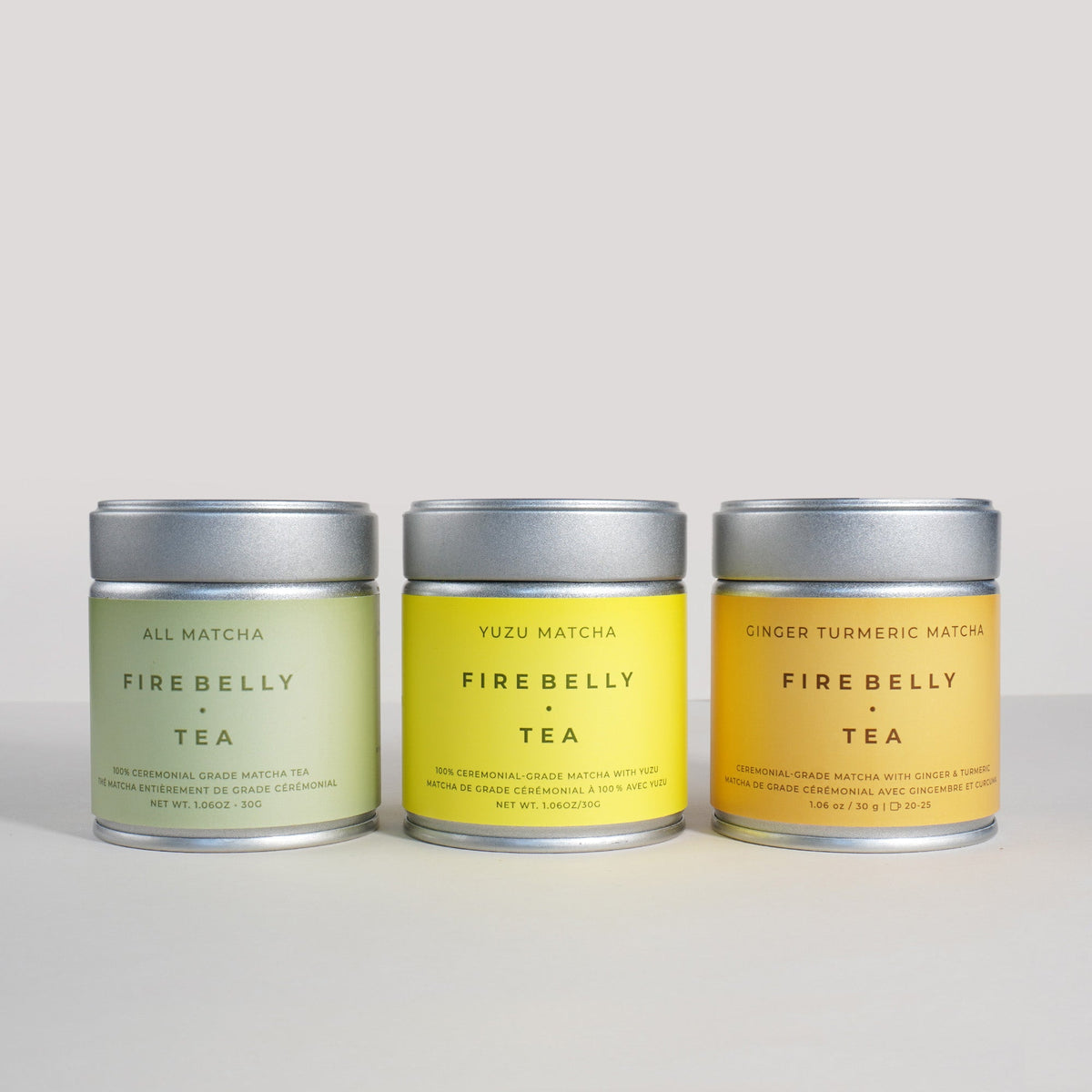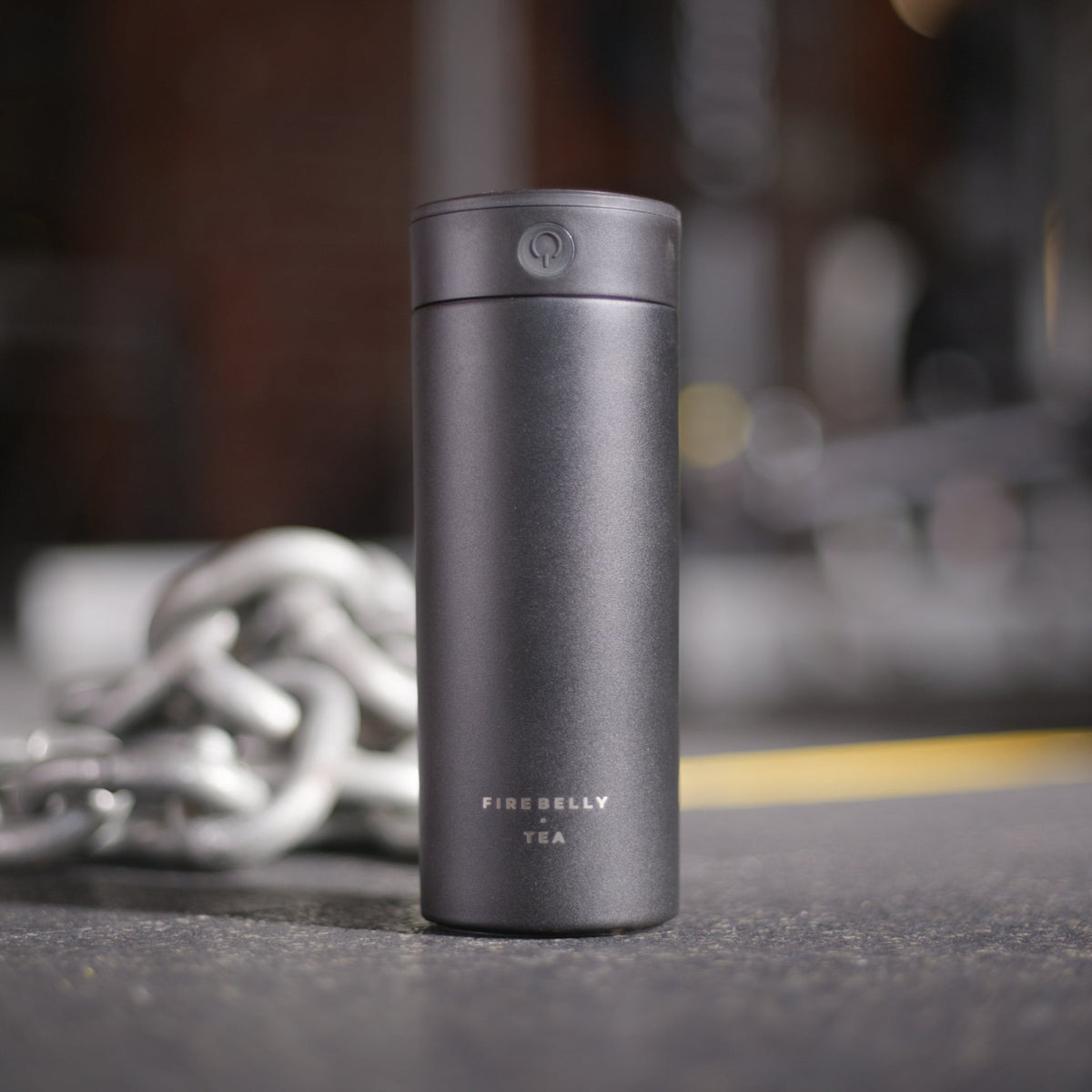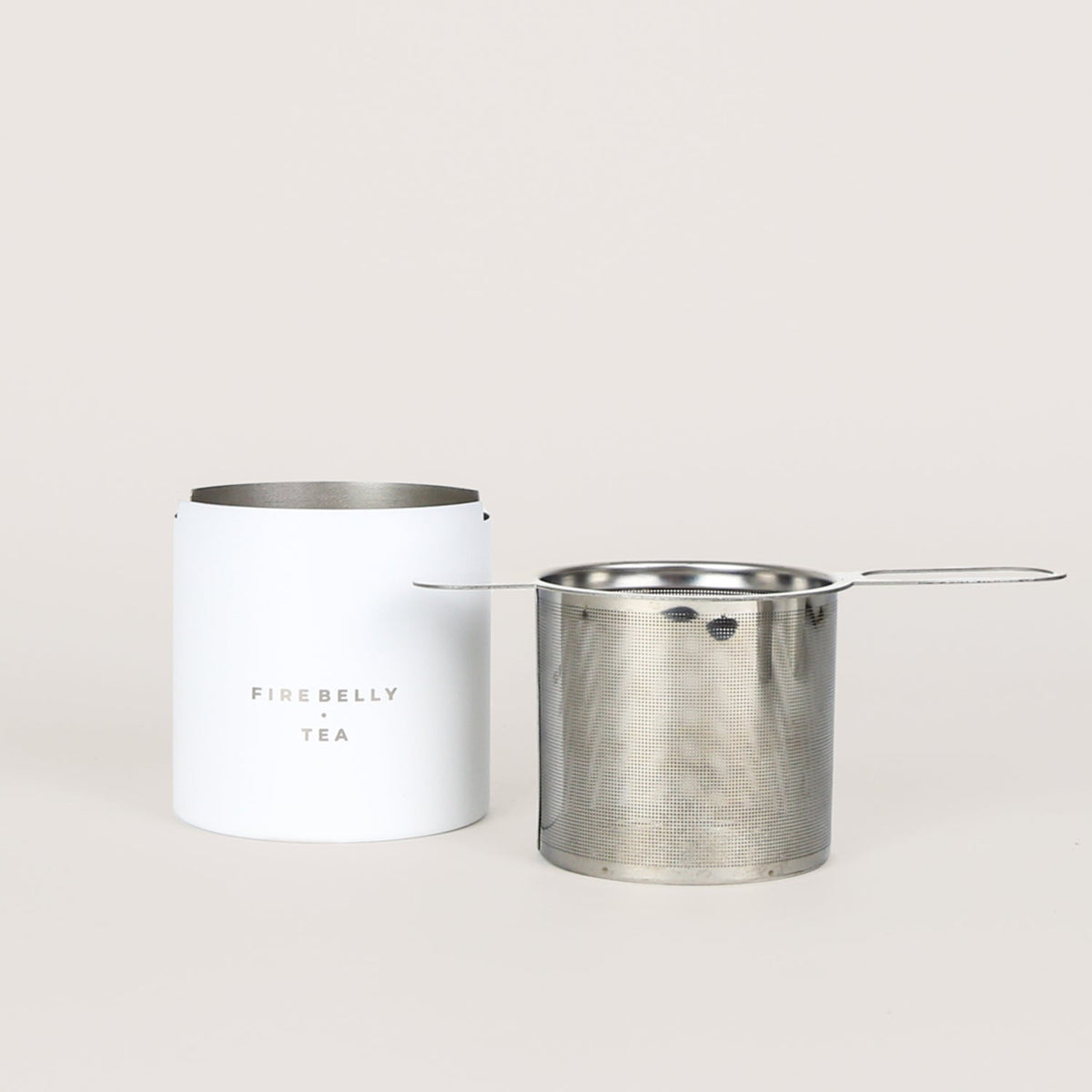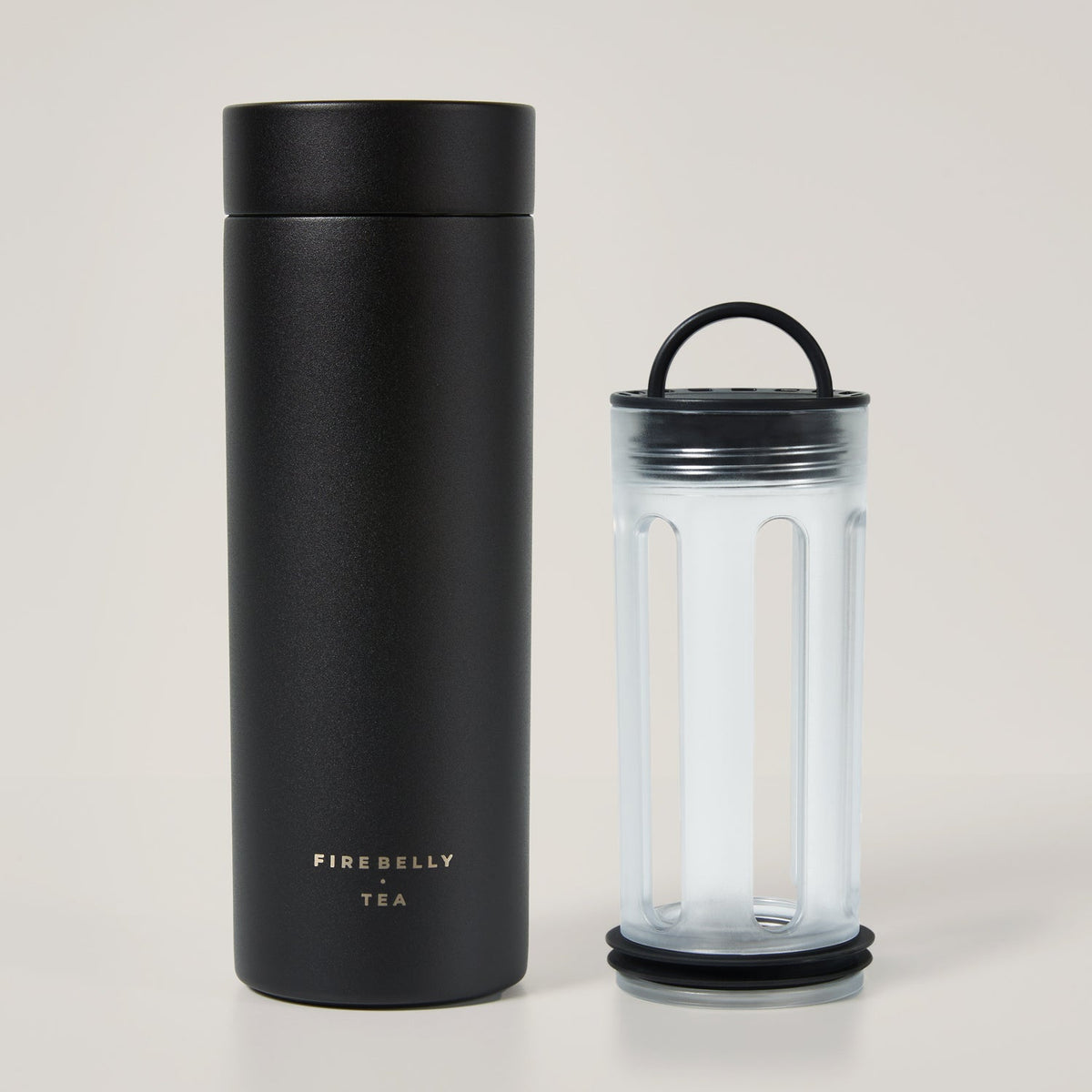From the early days of ancient China, the discovery of tea marked the beginning of a health and taste-centered journey that would traverse cultures, transcend borders, and pour itself into the cups of various tea traditions worldwide.
With its rich history and diverse methodologies, the art of brewing tea has become a global practice, with each country crafting its unique cultural nuances into crafting the perfect cup of tea. This article will explore the intricacies of brewing different types of tea and the fascinating journey this brew has taken from the early days of discovery to the contemporary methods practiced today.
Early Days of Tea Discovery and Brewing
The flavor-filled tale of tea's origin unfolds in the ancient realms of China. According to Chinese folklore, Emperor Shen Nong, a revered figure known as the "Divine Farmer," stumbled upon the world of tea in 2737 BCE.
As the story goes, while boiling water in his garden, leaves from an overhanging wild tea tree floated down and settled into his pot. Intrigued by the aromatic, warm brew that began wafting from his pot, the farmer's accidental encounter marked the inception of tea. From this humble beginning, the cultivation and brewing of tea became a cultural and social phenomenon.
The tea journey extended far beyond China's borders, as trade routes and cultural exchanges disseminated the art of tea cultivation and brewing to diverse corners around the world.
The Tea Experience Brewing Around The World
From the elaborate tea ceremonies of Japan to the leisurely afternoon tea traditions in England, each culture left its signature mark on the tea brewing and drinking experience. These methods transformed tea from a simple brew into a reflection of history, geography, and individual taste. Tea evolved into a cherished and integral part of various societies and medicinal practices from a chance discovery.
The Gongfu Cha method in China emphasizes multiple short infusions, extracting nuanced flavors from the leaves. In Japan, the elaborate Japanese tea ceremony, Chanoyu, celebrates matcha's preparation, serving, and drinking, creating a harmonious experience. In the UK, afternoon tea embodies a more relaxed affair, with black tea served with milk, sugar, honey, or even lemon alongside lavish pastries and sandwiches.
Different cultures also employ varied equipment in their tea brewing processes. From the delicate Chinese Yixing clay teapots to the traditional Japanese chawan (tea bowls) and the classic British porcelain tea cup, the vessels used in tea preparation reflect each culture's unique aesthetics and philosophies.
As tea reached new continents and cultures, brewing methods for the perfect cup of tea became intertwined with human ingenuity and creativity. These different brewing techniques reflected national and regional preferences and became the foundation for social events, meditation practices, and artistic expression. From the grandeur of traditional Chinese tea ceremonies to the simplicity of British teatime rituals, the art of brewing tea encapsulates a rich history that continues to unfold with every carefully steeped cup.
How To Make a Perfect Cup of Tea Every Time
Although brewing practices have mostly stayed the same over the past few centuries, different tea brewing techniques are employed to make the perfect cup of tea. While these are tried and tested tea methods, most of it boils down to your personal preference. It is always fun to experiment to bring out the full body of the tea taste and your enjoyment of the tea experience. Let's look at some popular ways to craft your cup.
The Best Way to Brew Black Tea
Black tea, known for its robust flavor and dark hue, requires a precise brewing process to unlock its full potential. As always, we suggest using high-quality loose-leaf black tea and freshly boiled, but not boiling, water. The water temperature for black tea leaves is crucial. We recommended using hot water at around 200-212°F (93-100°C).
The ratio of loose-leaf tea to water is crucial. Start with one teaspoon of loose leaves per 8 ounces of water. You can adjust this ratio based on your preference for a stronger or milder brew. Using the right equipment will enhance your overall tea brewing process. Choose a teapot with an infuser or a teapot and strainer combination to allow the leaves to expand fully while containing them during the steeping process.
Brewing Black Tea:
-
Once the water is heated, pour it over the tea leaves, ensuring a thorough and even wetting.
-
Allow 3-5 minutes of steeping time - you can adjust this according to taste. The longer the steeping time, the more robust the flavor profile. However, be cautious about over steeping your cup of tea, as this can result in a bitter brew.
-
When the steeping time is complete, use a strainer to separate the leaves from the liquid as you pour the tea into your favorite teacup.
If you enjoy your black tea with milk or sweeteners, now is the time to customize your cup to suit your taste. The result should be a beautifully amber-hued liquor, brimming with the robust flavors characteristic of black tea. Whether you enjoy your brew hot or cold, with or without adding milk and sugar, brewing black loose-leaf tea is a delightful ritual that invites exploration and personalization.
Get a Great Green Tea Experience
Green tea, celebrated for its grassy notes and several health benefits, demands a gentler touch in brewing. Fresh, loose-leaf green tea is a superior choice over green tea bags. Instead of hot water, use water heated to a lower temperature, around 160-185°F (71-85°C).
The recommended tea-to-water ratio is typically one teaspoon of loose leaves per 8 ounces of water. As with black tea, preferences may vary, and using more tea or more water will create a bitter or weaker flavor. Employ a teapot with an infuser or a specialized green teapot to keep the tea leaves contained while allowing for optimal leaf expansion during the steeping time.
Brewing Green Tea:
-
Once the water reaches the desired temperature, pour it gently over the loose tea leaves, allowing for an even saturation.
-
Steep for 2-3 minutes to preserve the tea's delicate flavors. Pay close attention to the evolving aroma during this process, providing a sensory cue to the tea's readiness.
-
After the brief steeping period, delicately strain the tea into your chosen cup to halt the infusion, preventing bitterness.
Green tea, with its grassy notes and health benefits, is best enjoyed in its pure form, without adding milk. The resulting beverage should exhibit a pale green or yellow hue, reflecting the tea's fresh and lively character. The subtleties of this carefully brewed green tea should showcase the balance of temperature, time, and technique in each cup.
Making the Most out of Your Matcha
Brewing matcha tea is a centuries-old ritual deeply ingrained in Japanese culture, evolving from the Zen Buddhist practice to a revered ceremony known as Chanoyu or the Way of Tea. The preparation of matcha involves a meticulous process and specialized tools that contribute to its distinct flavor and vibrant green hue.
Brewing Matcha Tea:
-
Begin by sifting one to two teaspoons of high-quality matcha powder into a matcha bowl or chawan to ensure a smooth and lump-free consistency. Use a bamboo scoop or chashaku to measure the matcha powder and add it to the bowl.
-
Use warm, not hot, water with a temperature around 160-185°F (71-85°C) as you gradually pour 2-4 ounces of hot water over the matcha.
-
The traditional bamboo whisk, or chasen, is then employed to vigorously whisk the matcha in a brisk "W" or "M" motion until a frothy layer forms. This method not only ensures a uniform blend but also enhances the texture and aroma of the matcha. The result is a velvety, emerald-green infusion that is visually stunning and rich in flavor.
The use of specialized matcha equipment, including the chawan, chasaku, and chasen, emphasizes the ceremonial nature of matcha preparation. Each step in this process, from the measured addition of water to the precise whisking, pays homage to the artistry of matcha brewing.
This ancient practice, born from Zen philosophy, invites a contemplative and mindful experience, making each bowl of matcha a serene connection to history and tradition. Adding milk to matcha is never recommended. Only use milk if you decide to make a matcha smoothie or latte. You can choose to use regular milk, almond milk, coconut milk, or soy milk as your creamy base.
Brewing White Loose-Leaf Tea
White tea, the least processed tea type, exudes delicate flavors and floral aromas. Brew it with care by never using boiling water directly on the leaves. Instead, use lower but warm water temperatures, around 160-185°F (71-85°C), and a longer steeping time of 4-5 minutes because under-steeping will make this tea taste flat and weak. A gaiwan or glass teacup can accentuate the visual beauty of unfurling white tea leaves during brewing. Like green tea, adding milk is not recommended in your cup of white tea.
Brewing Oolong Loose-Leaf Tea
With its partially oxidized and fermented leaves, oolong tea will give the tea drinker a broad spectrum of flavors between green and black tea. Use freshly boiled but not boiling water at around 185-205°F (85-96°C) and steep the leaves for 4-7 minutes. Over-steeping or under-steeping oolong will be based on personal taste. Using a traditional Chinese Yixing teapot can enhance the oolong tea experience. It is also not recommended to add milk to oolong tea. Milk can significantly affect the flavor of the tea.
Brewing Different Herbal Tea
Black, green, oolong, and white tea are "true teas" because they are harvested from the Camellia sinensis tea plant. The only difference between those teas is the level of processing. Black tea and oolong go through more processing and are darker teas. Green and white teas go through less processing and are typically lighter teas.
Herbal tea is not considered a "true tea" because it is made from other plants' seeds, flowers, stems, leaves, and roots. A few examples of different types of herbal tea are chamomile, lavender, ginger, and mint. These teas are caffeine-free and offer myriad flavor profiles and health benefits.
The brewing process varies depending on the herbs used. Generally, a temperature range of 212°F (100°C) is suitable for most herbal blends. Steep for 5-7 minutes, adjusting based on taste preferences. Use an infuser or a teapot to ensure the optimal extraction of herbal essences. It is best to drink most herbal teas without milk. However, some herbal teas like rooibos are okay with a small splash of milk.
Loose Leaf Tea vs. Tea Bag Tea
When it comes to brewed tea, there is a long-standing debate as to which tea is best - loose tea or tea bags. On the one hand, tea bags offer convenience. You place a tea bag in your cup or pot, pour some hot water on top, and brew for a few minutes. Add milk or sugar, maybe a squeeze of lemon and honey, and enjoy.
Brewing loose tea is a more immersive sensory experience than brewed tea bags. You watch as the loose tea unfurls in hot water. You smell the rich aroma of the loose tea as it releases its complex flavors and aromas. Once brewed, the quality of loose tea is often superior to tea bag tea in many ways. Tea bag tea is generally over-processed, creating a fine dust that can make your tea taste flat and less potent. Loose tea provides more flavor and health benefits in each cup of tea.
Also, loose tea is often more environmentally friendly, as it generates less waste than tea in tea bag form. You can control the amount of loose tea you place in your teapot or cup of tea, which means you can control the flavor and create the perfect cup of tea better than if you used tea bags.
What matters the most when it comes to tea bag tea over loose tea is your personal preference. Do you need the convenience of tea bag tea? Or do you like the rich flavor and tea brewing experience of loose tea? We always recommend loose tea for a full-bodied brew, but how you fill your cups is up to you. With a little hot water and a bit of time, your perfect cup of tea is just a few minutes away.
Make The Best Brew For Your Cup
Brewing tea is a thread that binds traditions and cultures, offering a sensory journey that transcends time and borders. Whether you love the rich intensity of black tea, the subtle elegance of white tea, or the vibrant ceremony of matcha, each brew celebrates the leaves' journey from garden to cup.
Experiment, savor, and embark on your own tea adventure. Add milk, sugar, honey, or lemon, or drink your brew as is. The world of tea is as diverse as the leaves themselves, waiting to be explored and enjoyed. Here are some delicious teas and tea blends you can explore right now!
